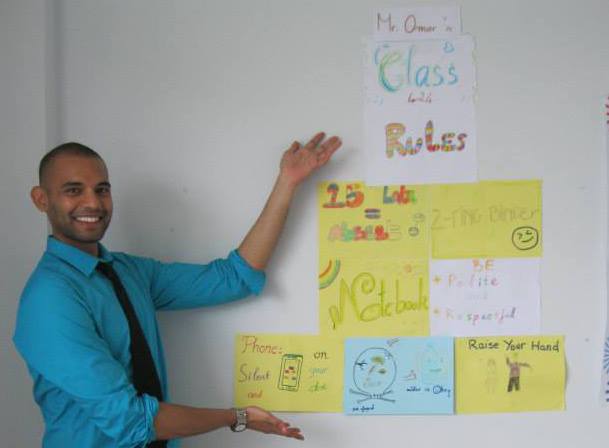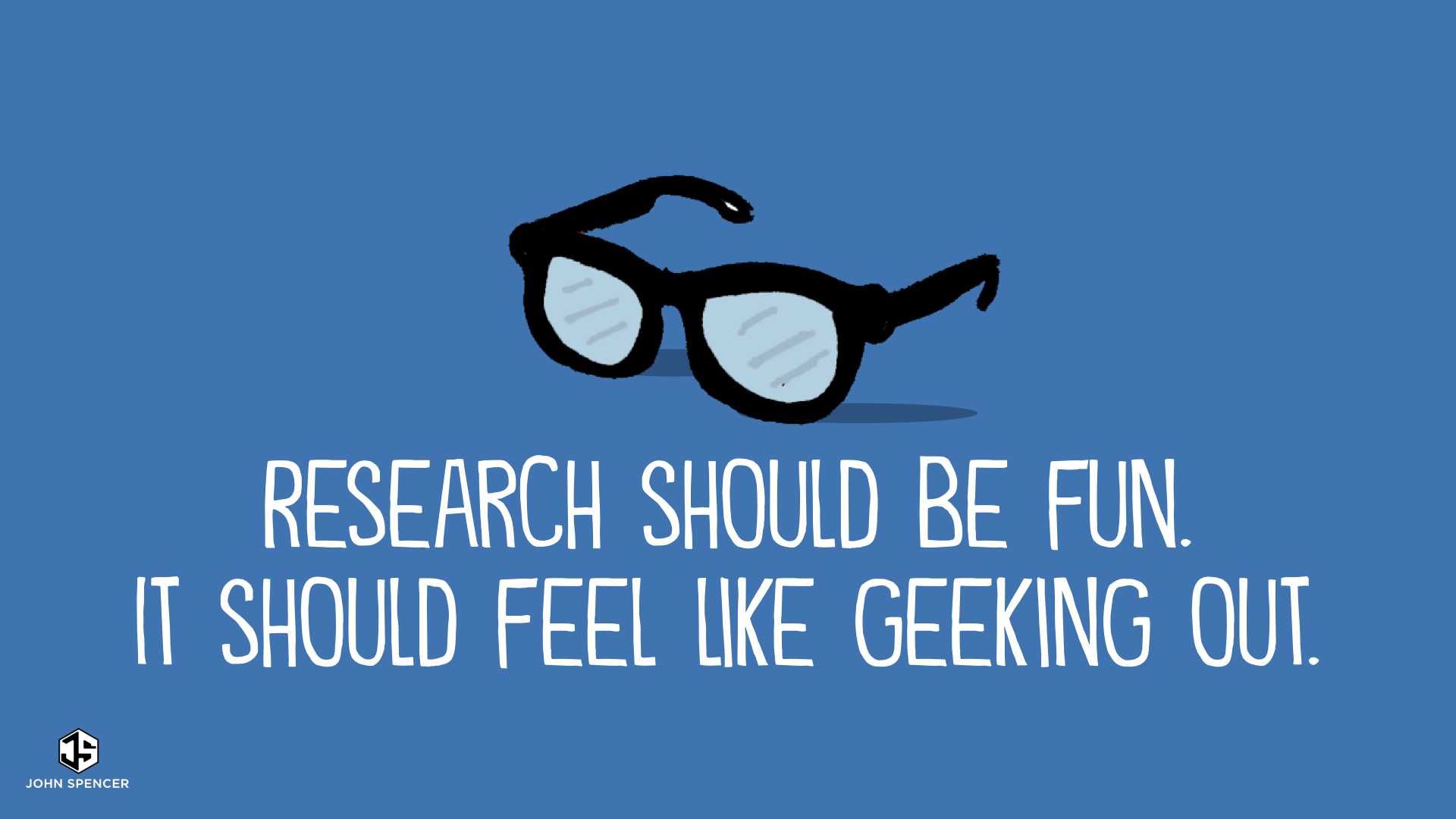Jul 1, 2018 | Omar Ahmad

Standing in front of my class in Malaysia, I wrote a few meaningful examples of how to use future tense to my (most of the time) eager-to-learn students.
“I will go to the mall soon.”
“I will play soccer tomorrow.”
To drive home this concept, I used pictures, actions, video clips, and had the students write, say, and act out different scenarios of the future.
“This style is used when you know 100%, in the future, you’re doing this.”, I would explain. Nothing better than seeing my student’s eyes brighten up — that look of, “Ohhhh, I get it!” is the one of the most rewarding feelings for a teacher. Summer vacation is also pretty rewarding!
However, for many personal reasons my nomadic time overseas was coming to a close as I soon moved back home to Dallas and ready to embark on a new career.
This is the story of how I went from English teacher to UX Researcher. On the surface, 2 vastly different fields that took a lot of effort to successfully make the transition. This process can easily be applied to almost any career change — especially in tech.
Step 1 — Watcha Gonna Do, Brotha?
“Learn to code!”
“Anyone can code, you can too!”
“Get a job instantly by learning to code!”
I was inundated with these messages when I first starting looking at what to do in the tech field. I knew I wanted something in tech because it’s not going anywhere anytime soon so it provides job security and stability. It’s hot on the streets right now, son!
I fell for the coding hype and decided to enroll in a coding bootcamp. I put a lot of effort and hours into school only to discover, after 3 months of bootcamp and another month of job hunting and coding on my own, that the dev life was not for me.

I didn’t live and breath code like all the other devs I was meeting. I couldn’t see myself hunched over a keyboard for hours on end. Sure, the potential money was great, but there has to be more to it than that.
TL;DR Lesson:
Take your time in figuring out what exactly you want to pursue. Once you have an idea, dabble in it yourself by taking advantage of the internet — read articles, online courses, YouTube videos, and those bulky things called books are good too.
Most importantly, talk to actual people who do that as a profession. Networking events are great (more on this later).
For me personally, the more I researched, the more I found out about this little field called User Experience.
Step 2 — Full Immersion
I read every article I could and subscribed to a bunch of YouTube channels about UX. I contacted UX bloggers, YouTubers, and random people on LinkedIn to ask them questions. Some answered with helpful answers and suggestions.
Yes, I straight up “cold messaged” bunch of people on LinkedIn with :
“Hi (insert name), my name’s Omar. I know this is random, but I’m just starting my journey into the world of UX. I see that you have lots of experience in the field from your time at (insert first company here) to (insert last company here). I was wondering if I could reach out to you and ask you some questions about how I can become you.”
I also went to every tech-related networking event I could find in Dallas and would seek out the UX people. I’d use a similar script:
“Hi, I’m Omar. I’m really new in the UX field and would love to pursue it. I was wondering, how can I be you? What’s it take?”
I got plenty of suggestions for books and resources which I’d actually go read, so when I met that person again I’d tell them, “I loved that chapter about information architecture. I had no idea the thought process that goes behind where to place every single menu item.”
At first I kept hearing about UX Design; it’s the one that most people think about and it’s the one that we all visually see. I hopped on Sketch and dabbled in designing wire frames.
But I’m not a designer by talent and had to look elsewhere. Luckily, I came across the Research component of UX and it immediately resonated with me.
I loved the ideas of seeking out people to discover what they want from their products; what are their pain points, pleasures, desires with an app or website; testing out prototypes and seeing what makes users happy.

Then, taking all that information and presenting it in a meaningful way for people to understand. Sound familiar?
“I will go to the mall soon.”
“I will play soccer tomorrow.”
“I will become a UX researcher.”
TL;DR Lesson:
For any career change, you must fully immerse yourself in that world. Think about it — you’re trying to make up for all the time most people spend in college gearing up for a particular career in a short amount of time.
Luckily, we have unlimited resources at our disposal thanks to the internet — but don’t forget about the old school tried and true methods of books and actual people! In fact, the actual people you talk to are the most important resources because not only do you get first-hand relevant advice, but also you’re creating your network. The old adage of “It’s not what you know, but who you know” applies here.
And very important — do NOT be afraid of asking questions!! People want to feel valued and important. Asking someone whom you deem an expert for advice is a big compliment and most people will help you out.
Step 3 — Educate Thyself
There are many avenues to educate yourself in a new career. You don’t HAVE to pay loads of money to get a degree — especially in the tech. It’s mainly about the network you create. Also, there are tons of online courses available — some of which are free and some cost money — that you can turn to.
For me personally, I decided to take a UX certificate course because:
a) I like face-to-face classroom environments
b) The instructors are well-known UXers in the Dallas community
c) I felt it would show some sort of initiative
d) Monetary motivation. I’m paying all this money so I better learn

A sign of a good class is you come away with some sort of project for your portfolio.
TL;DR Lesson:
Whether you opt for free online classes, paid online classes, paid face-to-face classes, or are lucky enough to find a mentor — doing some sort of learning and SHOWING that you’re learning is critical because it shows you’re willing to put in the time and effort.
Step 4 — Let’s Get You A Job
This is where all the networking I did in the beginning really helped. Now I can go back to those people and say, “Hey! I’m about to finish this class up, would love to hear about any opportunities.”
Personally, I made a sacrifice in my paycheck and offered to free-lance for various startups — key in on the word FREE. Yes, I did it for no money. Everyone’s loves free help and it’s an almost surefire way to get real experience under your belt.
Through all my networking, I was able to help out 3 or 4 different startups with researcher type tasks such as:
· Surveys
· Interviews
· Mobile testing
· Desktop testing
· Presentations
With this, I compiled these projects on my portfolio and of course put them on me paper and LinkedIn resume.
I decided next best step was to find some sort of shadowing, apprentice, or intern position.

So, I printed off copies of my resume, dressed up, and simply walked into a few companies asking about any internship opportunities:
“Hi, I’m Omar and I apologize for not calling ahead of time. But I thought I’d take an old-school approach and show up with my resume and ask about any possible UX research internships you may have.”
It really shows how much you want it. It takes a lot of courage, especially in this digital world we live in, to physically show up somewhere like that. It’s different and it stands out.
I was able to meet a few people who gave me great advice and connections to other companies for free-lancing.
Eventually, one of my networking events finally paid off as I landed an internship which rolled into a full time position!
TL;DR Lesson:
If you’re able to make a sacrifice and work for free, do it because the long-term goal of getting a job (and money) faster will work out in the end. Plus you’ll be racking up resume builders and recommendation letters.
Do whatever it takes to get actual job experience. Don’t be embarrassed or don’t let your ego get in the way of asking about opportunities and jobs.
Really put yourself out there when talking to people. Be vulnerable and straight-forward about who you are, what you’re doing, and what you’re looking for. It’s something a lot of people don’t do these days and it’ll make you stand out.
In Conclusion
Changing careers can be tough, but with the right steps in place it’s more manageable. My path from English teacher to UX Researcher took a lot of ground-work, motivation, and most importantly the right people.
So if anything, focus on these things:
I will network as much as I can.
I will network as much as I can. (Yes, it’s on there twice for a reason)
I will take the time to learn both informally and formally.
I will put myself out there.
I will gain real world experience no matter what.
